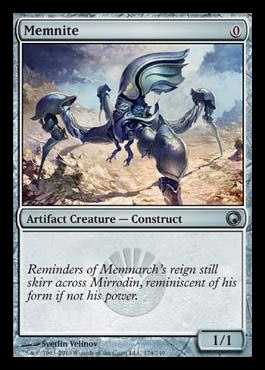- The currently accepted formal definition of a mole is the number of carbon-12 atoms in exactly 12 grams of the pure substace. This is not a good operational definition, however, because it takes too long to find, purify, and count all those atoms. The best experimental value is based on x-ray diffraction experiments on silicon crystals and puts the number within 0.0000010 of 6.0221415 x 10^23.
- Avogadro's number. One mole contains 6 x 10 to the power 23 particles. How to find number of particles. Number of given moles x 6.0x10²³ particles/mol.
Avogadro's number is the number of grams in mole. The Avogadro constant (NA or L) is the proportionality factor that relates the number of constituent particles (usually molecules, atoms or ions) in a sample with the amount of substance in that sample. Its SI unit is the reciprocal mole, and it is defined as NA = 6.022 140 76 × 1023 mol−1.
| Value of NA[1] in various units |
|---|
| 6.02214179(30)×1023 mol−1 |
| 2.73159757(14)×1026 lb-mol−1 |
| 1.707248479(85)×1025 oz-mol−1 |
The Avogadro constant (symbols: L, NA) is the number of particles (usually atoms or molecules) in one mole of a given substance.[2] Its value is equal to 6.02214129(27)×1023 mol−1.[3] The constant was named after the ItalianscientistAmedeo Avogadro.
The measurement of Avogadro's constant was refined in 2011 to 6.02214078×1023 ± 0.00000018×1023.[4]
An old term closely related to the Avogadro constant is Avogadro's number. Avogadro's number is the number of atoms in 12 grams of the carbonisotopecarbon-12. Avogadro's number is a dimensionless quantity and has the numerical value of the Avogadro constant given in base units.
Related pages[change | change source]
References[change | change source]
Avogadro's Number Is The Number Of Quizlet

- ↑Mohr, Peter J. (2008). 'CODATA Recommended Values of the Fundamental Physical Constants: 2006'(PDF). Rev. Mod. Phys.80: 633–730. Bibcode:2008RvMP...80..633M. doi:10.1103/RevModPhys.80.633.Unknown parameter
|coauthors=ignored (|author=suggested) (help)Direct link to value. - ↑Johnston, Lesley (2008). Salters Advanced Chemistry: Revise Chemistry For Salters AS (Second ed.). Heinemann. p. 2. ISBN978-0-435-63154-3.
- ↑'Avogadro constant'. National Institute of Standards and Technology. Retrieved 2013-11-07.CS1 maint: discouraged parameter (link)
- ↑Andreas, Birk; et al. (2011). 'Determination of the Avogadro Constant by counting the atoms in a 28Si Crystal'. Physical Review Letters. 106 (3). arXiv:1010.2317. Bibcode:2011PhRvL.106c0801A. doi:10.1103/PhysRevLett.106.030801.

Contrary to the beliefs of generations of chemistry students, Avogadro’s number—the number of particles in a unit known as a mole—was not discovered by Amadeo Avogadro (1776-1856). Avogadro was a lawyer who became interested in mathematics and physics, and in 1820 he became the first professor of physics in Italy. Avogadro is most famous for his hypothesis that equal volumes of different gases at the same temperature and pressure contain the same number of particles.
The first person to estimate the actual number of particles in a given amount of a substance was Josef Loschmidt, an Austrian high school teacher who later became a professor at the University of Vienna. In 1865 Loschmidt used kinetic molecular theory to estimate the number of particles in one cubic centimeter of gas at standard conditions. This quantity is now known as the Loschmidt constant, and the accepted value of this constant is 2.6867773 x 1025 m-3.
The term “Avogadro’s number” was first used by French physicist Jean Baptiste Perrin. In 1909 Perrin reported an estimate of Avogadro’s number based on his work on Brownian motion—the random movement of microscopic particles suspended in a liquid or gas. In the years since then, a variety of techniques have been used to estimate the magnitude of this fundamental constant.
Accurate determinations of Avogadro’s number require the measurement of a single quantity on both the atomic and macroscopic scales using the same unit of measurement. This became possible for the first time when American physicist Robert Millikan measured the charge on an electron. The charge on a mole of electrons had been known for some time and is the constant called the Faraday. The best estimate of the value of a Faraday, according to the National Institute of Standards and Technology (NIST), is 96,485.3383 coulombs per mole of electrons. The best estimate of the charge on an electron based on modern experiments is 1.60217653 x 10-19 coulombs per electron. If you divide the charge on a mole of electrons by the charge on a single electron you obtain a value of Avogadro’s number of 6.02214154 x 1023 particles per mole.
Avogadro's Number Is The Number Of Amu
Another approach to determining Avogadro’s number starts with careful measurements of the density of an ultrapure sample of a material on the macroscopic scale. The density of this material on the atomic scale is then measured by using x-ray diffraction techniques to determine the number of atoms per unit cell in the crystal and the distance between the equivalent points that define the unit cell (see Physical Review Letters, 1974, 33, 464).
